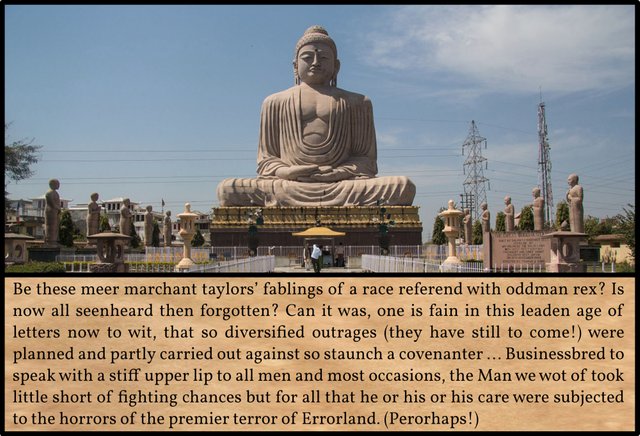
Continuing our journalistic investigation into the HCE Affair, we ask ourselves now whether the opinions expressed by the wider public during the Street Interview can be trusted. The remaining ten pages of Chapter 3 comprise an episode known as The Battery at the Gate.
Joseph Campbell & Henry Morton Robinson summarized this paragraph thus:
Now what about all these fablings? Can it be that such diversified outrages were planned and carried out against so stanch a covenanter? Many of the notices, we trow, are given us by some who use the truth but sparingly. One fact, however, comes out clearly, namely, that this city, his citadel of refuge, whither (if accounts be true) beyond the gales of Adriatic he had fled, shipalone, a raven of the wave, to forget, in expiating, manslaughter, and to league his lot with a papist shee, this lotus land, Emerald Ilium, in which his days were to be long by the abundant mercy of Him Which Thundereth From On High, this land would rise against him, do him hurt, as were he a curse. Indeed he was to be the victim of Ireland’s first reign of terror. (Campbell & Robinson 71)
HCE is a Protestant, but he marries the Catholic ALP—a papist shee—and settles in the Emerald Isle. But the attacks on him continue unabated. The opening words anticipate Chapter II.3 and How Kersse the Tailor Made a Suit of Clothes for the Norwegian Captain, an Oedipal conflict between a tailor and a sailor (John Gordon 61.28).
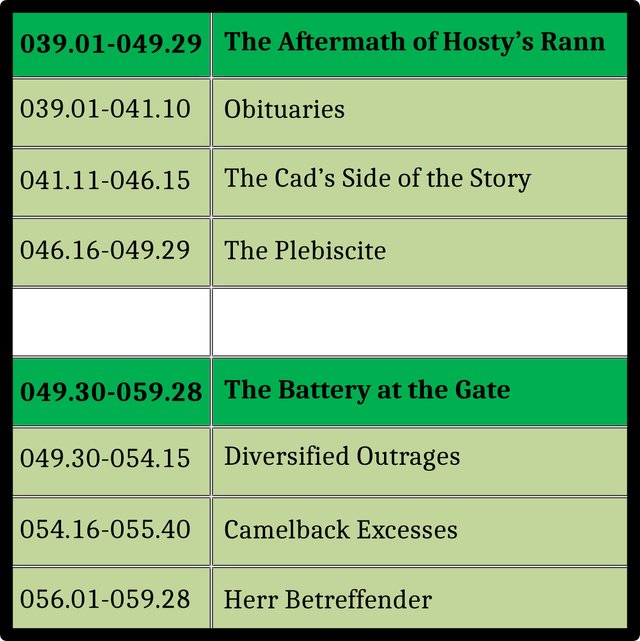
In parenthesis we are told that the diversified outrages to which he is subjected are still to come. This is an indication that the order in which Joyce drafted the fragments of this chapter was not the same as the order in which they appeared in the published version. The evolution of this chapter was actually quite involved, as Bill Cadbury, Professor Emeritus of English at the University of Oregon, describes:
But each of the remaining sections of chapter 3 that Joyce wrote next, 3§2 [RFW 049.30-054.15] and 3§3 [RFW 054.16-059.28], mobilizes the same material in a slightly different way, each way having strengths and weaknesses of continuity with what has come before. It seems most likely that Joyce drafted the sections as alternatives, only later deciding to use both rather than to choose between them and putting them in the reverse order from that in which he drafted them.
Joyce began with what will become 3§3 ... and wrote that “First these outrages” that we have been hearing about may have been “instigated” by the “rushy hollow heroines” ... who had just been referred to at the end of the plebiscite, briefly reporting their later sad tales, their taking carbolic and necking in haymows [RFW 054.16 ff] ...
But after this first paragraph Joyce continued to write as if the “these” of “these outrages” referred not to the outrages that preceded but to those that he is about to describe, beginning his next paragraph “First there was a gateway” [see RFW 055.28 ff] ... He presents an outrage at that gateway, a violent attack on HCE culminating in “threats and abuse” ... and the throwing of stones before the attacker leaves ...
But after first-drafting what becomes 3§3 [Now to the obverse ... camelback excesses], Joyce seems to have tried another version [Be these meer marchant taylors’ fablings ...] of the “outrages” that carry so much thematic weight and characterize both what HCE does and what is done to him. The narrator begins this new version by asking, “Can it be that so diversified outrages” were actually “planned and carried out” against HCE? Amazing, and he such a “staunch covenanter” ... This opening reminds the reader of HCE’s Protestantism, with which the section also ends as it presents the “scripture reader” Laddy Cummins [RFW 053.40-054.02] ...
This second outrage, like the version drafted before it, centers on an attack at the “gateway” ... (Crispi & Slote 71-73)
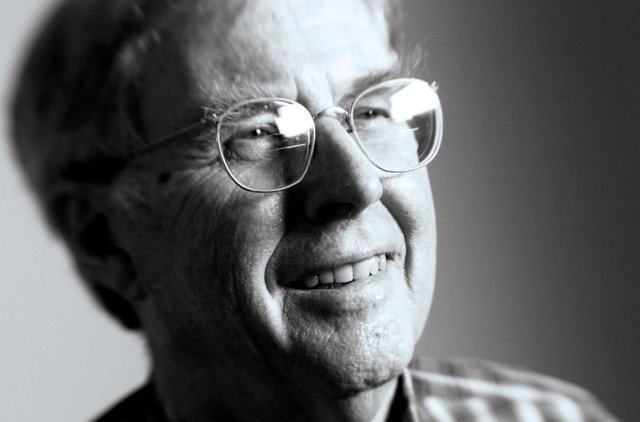
I have no idea who Cadbury’s Laddy Cummins is. Long Lally Tobkids ... a conscientious scripturereader seems to conceal an equally mysterious Larry Tomkins.
Bill Cadbury defends Joyce’s final reordering of these fragments, despite the chaotic nature of the resulting narrative:
By using the later-drafted “outrages” passage (3§2) before the earlier-drafted one (3§3) Joyce loses the tight connection between references to the girls in the park that close 3§1 and open 3§3. But to use 3§2 first better establishes the sense of HCE’s resurrection from his disappearance into the plebiscite and to the eternal sequence of being attacked and becoming an object of identification for others ... HCE being discovered in or emerging from a refuge and being done hurt by society will be the essential sequence of the rest of the narrative of these chapters. (Crispi & Slote 75)
Of course, the character assassination HCE suffers in the Plebiscite and the physical attack on him in the Battery at the Gate are essentially one and the same.
First-Draft Version
The first draft of this paragraph, which dates from November 1923, was only about eight or nine lines long:
Can it be that so diversified outrages were planned and partly carried out against him if it is true that those recorded took place? The city of refuge whither he had fled to forget & expiate manslaughter, the land in which by the commandment of promise his days were to be long, murmured, wd rise against him, do him hurt, as were he more a curse for them, the lay quick, the saints of an unholy nation, the castaway in resurrection of damnation to convince him of their proper sins. Business bred, Humphrey took no chances. Yet he was subject to terror. (Hayman 72)
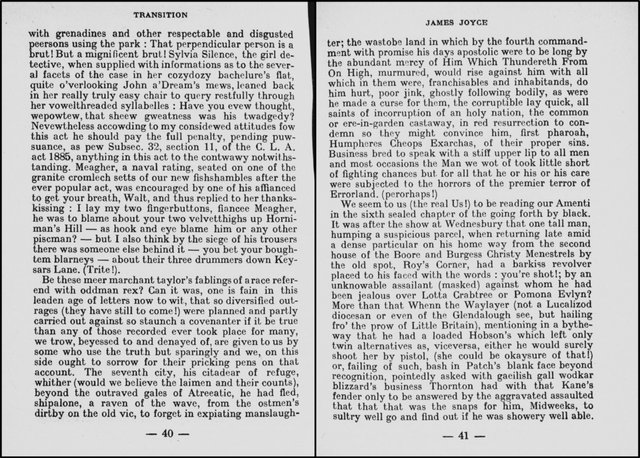
The version that was published in transition in June 1927 is only slightly shorter than the published version:
Be these meer marchant taylor’s fablings of a race referend with oddman rex? Can it was, one is fain in this leaden age of letters now to wit, that so diversified outrages (they have still to come!) were planned and partly carried out against so staunch a covenanter if it be true than any of those recorded ever took place for many, we trow, beyessed to and denayed of, are given to us by some who use the truth but sparingly and we, on this side ought to sorrow for their pricking pens on that account. The seventh city, his citadear of refuge, whither (would we believe the laimen and their counts), beyond the outraved gales of Atreeatic, he had fled, shipalone, a raven of the wave, from the ostmen’s dirtby on the old vic, to forget in expiating manslaughter; the wastobe land in which by the fourth commandment with promise his days apostolic were to be long by the abundant mercy of Him Which Thundereth From On High, murmured, would rise against him with all which in them were, franchisables and inhabitands, do him hurt, poor jink, ghostly following bodily, as were he made a curse for them, the corruptible lay quick, all saints of incorruption of an holy nation, the common or ere-in-garden castaway, in red resurrection to condemn so they might convince him, first pharoah, Humpheres Cheops Exarchas, of their proper sins. Business bred to speak with a stiff upper lip to all men and most occasions the Man we wot of took little short of fighting chances but for all that he or his or his care were subjected to the horrors of the premier terror of Errorland. (perorhaps!) (Jolas & Paul 40-41)
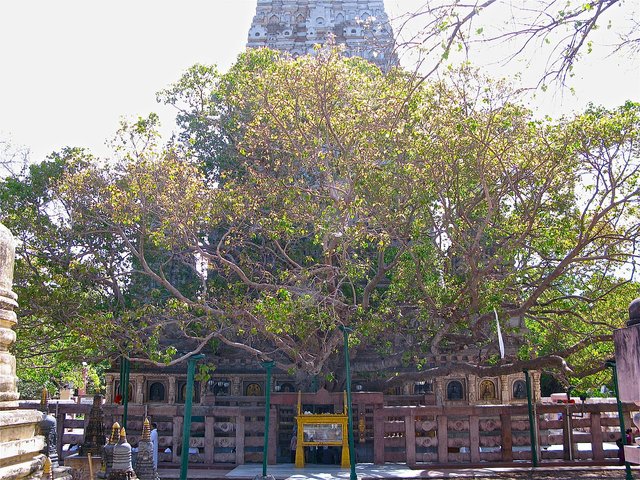
Buddha
Among the additions Joyce made to the first draft of this paragraph was a cluster of allusions to the Buddha. These were added after the publication of the third issue of transition. Joyce’s principal source for information on the life of Siddhartha Gautama was André-Ferdinand Hérold’s French biography La Vie du Bouddha, d’après les textes de l’Inde ancienne, which was published in Paris in 1922. An English translation by Paul Charles Blum came out in New York five years later.
- Urovivla There was a village called Uruvilva near the spot where Siddhartha spent long hours in meditation (Hérold & Blum 89). In the original French text, the name is spelled Ourouvilva. Note that Joyce has metathesized the original -lv- into -vl-. Was this deliberate on Joyce’s part, or did he simply misread the name? In VI.B.46.123w, he recorded the name as Urovilva In Pali, the language of the sacred Buddhist texts, the name is spelled Uruvelā. Today this place is known as Bodh Gaya.
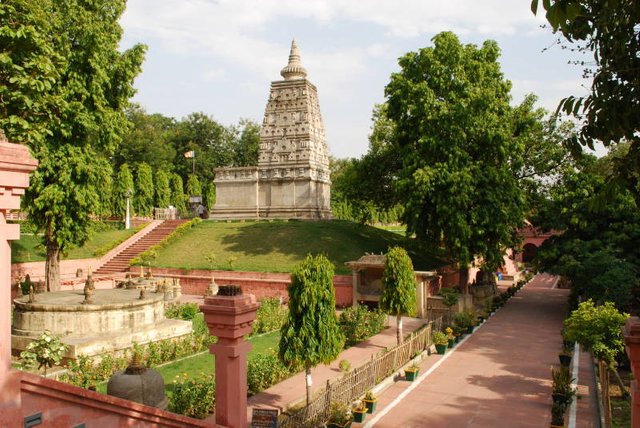
- changing clues with a baggermalster The Buddha changed clothes with a god disguised as a hunter:
But the hero was still wearing his gorgeous robe. He wanted a plain one, one suitable to a hermit. Whereupon a hunter appeared, wearing a coarse garment made of a reddish material. Siddhartha said to him:
“Your peaceful robe is like those worn by hermits; it offers a strange contrast to your savage bow. Give me your clothes and take mine in exchange. They will suit you better.”
“Thanks to these clothes,” said the hunter, “I can deceive the beasts in the forests. They do not fear me, and I can kill them at close range. But if you have need of them, my lord, I shall willingly give them to you and take yours in exchange.”
Siddhartha joyfully donned the coarse, reddish-coloured clothes belonging to the hunter, and the hunter reverently accepted the hero’s robe; then he disappeared into the sky. Siddhartha realized that the Gods themselves had wished to present him with his hermit’s robe, and he rejoiced. (Hérold & Blum 75-76)
baggermalster also includes the German: Bürgermeister, mayor, and Ibsen’s Dano-Norwegian: Bygmester Solness, The Master Builder. Hérold’s divine hunter, however, is now a beggar and a maltster. The implication is that when HCE arrives in Dublin, he disguises himself as a brewer.
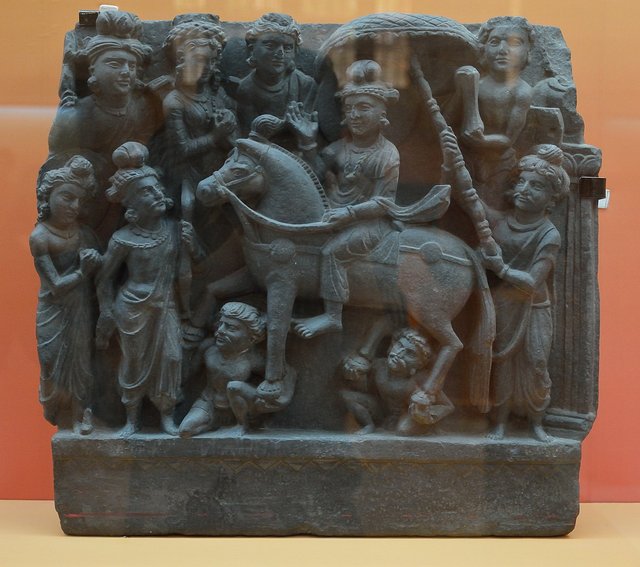
- silentiousissuemeant under night’s altosonority When the Buddha fled from his father’s palace, his horse Kanthaka (first introduced to us at RFW 019.30 clankatachankata) was careful not to make any noise. Even the gates swung open silently on their own:
Le bon cheval se garda de faire aucun bruit dans la nuit sonore. Nul serviteur ne s’éveilla, nul habitant de Kapilavastou. Des barres de fer, très lourdes, tenaient fermées les portes de la ville ; un éléphant ne les eût soulevées qu’avec peine, mais, pour que le prince passât, les portes s’ouvrirent d’elles-mêmes, silencieusement. (Hérold 58)
The [good] horse was careful to make no noise, for the night was clear. No one in the palace or in Kapilavastu was awakened. Heavy iron bars protected the gates of the city; an elephant could have raised them only with great difficulty, but, to allow the prince to pass, the gates opened silently of their own accord. (Hérold & Blum 71)
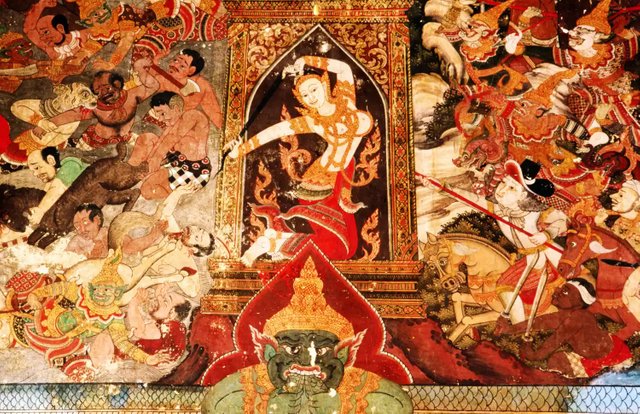
- (be mercy, Mara! A he whence Rahoulas!) Mara is an evil demon who tempts the Buddha. His name is derived from the Sanskrit: मार [mā́ra], death. Râhoula (Rahula in Blum’s translation) is the Buddha’s son. What does this parenthesis mean? Coming immediately after an allusion to the wave, it is possible that Mara is also the Irish: muir, mara, sea. At one point, Mara tries to drown the Buddha in a pool (Hérold & Blum 92). The Buddha calls the Earth to witness his triumph. He touches the Earth with his right hand, summoning her to be his witness. The Earth goddess, in the form of the beautiful woman, emerges from the Earth (Hérold & Blum 102). In another version of the tale, the goddess Phra Mae Thorani (or Prithvi twists her long hair and torrents of water flow out, washing away Mara and his army. But I still can’t make any sense of A he whence Rahoulas! Why does Joyce pluralize Rahoula? Glasheen thinks Rahoulas is singular:
Mara—when Buddha fled home to seek enlightenment, he was tempted to remain by love of his baby son, Rahoulas, and he was tempted by Mara (an evil spirit) with the kingdoms of the earth. (Glasheen 185)
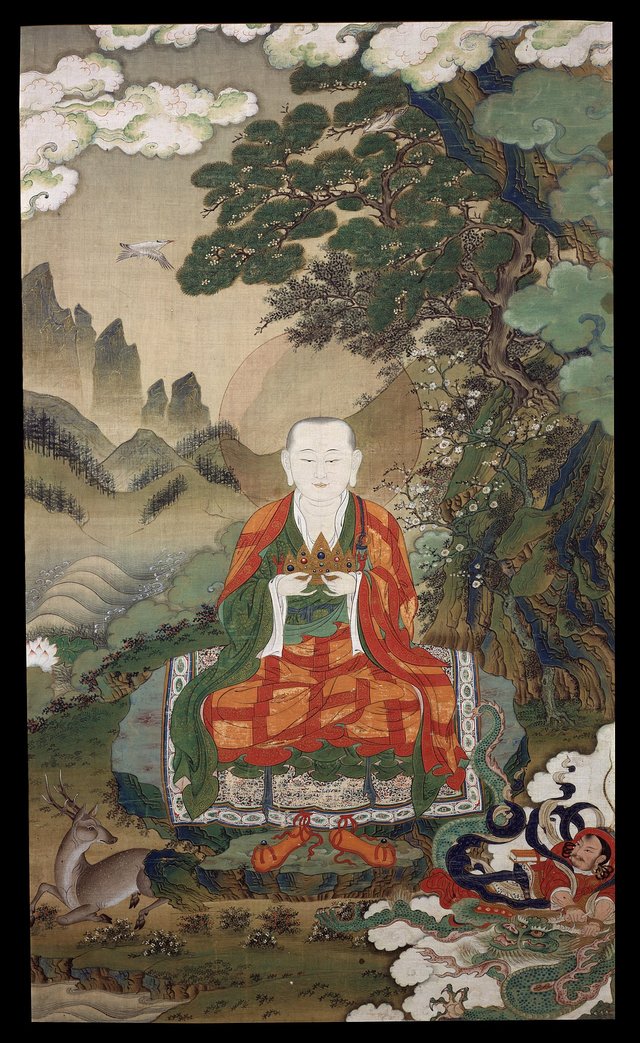
- (if you are looking for the bilder deep your ear on the movietone!) The Buddha, who had been looking for the builder of the house for years, succeeded when he finally achieved enlightenment. The short chapter in which this is described is worth quoting in full:
By sunset the army of the Evil One had fled. Nothing had disturbed the hero’s meditation, and, in the first watch of the night, he arrived at the knowledge of all that had passed in previous existences. In the second watch, he learned the present state of all beings. In the third, he understood the chain of causes and effects.
He now clearly saw all creatures being continually reborn, and, whether of high or of low caste, in the path of virtue or of evil, he saw them going through the round of existences, at the mercy of their actions. And the hero thought:
“How miserable is this world that is born, grows old and dies, then is reborn only to grow old and die again! And man knows no way out!”
And in profound meditation, he said to himself:
“What is the cause of old age and death ? There is old age and death because there is birth. Old age and death are due to birth. What is the cause of birth? There is birth because there is existence. Birth is due to existence. What is the cause of existence ? There is existence because there are ties. Existence is due to ties. What is the cause of ties? There are ties because there is desire. Ties are due to desire. What is the cause of desire? There is desire because there is sensation. Desire is due to sensation. What is the cause of sensation? There is sensation because there is contact. Sensation is due to contact. What is the cause of contact? There is contact because there are six senses. Contact is due to the six senses. What is the cause of the six senses? There are six senses because there is name and form. The six senses are due to name and form. What is the cause of name and form?There is name and form because there is perception. Name and form are due to perception. What is the cause of perception ? There is perception because there is impression. Perception is due to impression. What is the cause of impression? There is impression because there is ignorance. Impression is due to ignorance.”
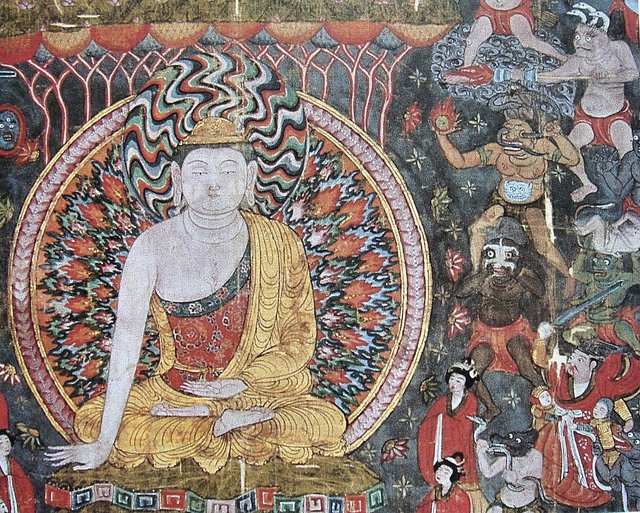
And he thought:
“Thus does ignorance lie at the root of death, of old age, of suffering, of despair. To suppress ignorance is to suppress impression. To suppress impression is to suppress perception. To suppress perception is to suppress name and form. To suppress name and form is to suppress the six senses. To suppress the six senses is to suppress contact. To suppress contact is to suppress sensation. To suppress sensation is to suppress desire. To suppress desire is to suppress ties. To suppress ties is to suppress existence. To suppress existence is to suppress birth. To suppress birth is to suppress old age and death. To exist is to suffer. Desire leads from birth to rebirth, from suffering to further suffering. By stifling desire, we prevent birth, we prevent suffering. By leading a life of holiness, desire is stifled, and we cease to endure birth and suffering.”
When dawn appeared, this most noble of men was a Buddha. He exclaimed:
“I have had numerous births. In vain have I sought the builder of the house. Oh, the torment of perpetual rebirth! But I have seen you at last, O builder of the house. You no longer build the house. The rafters are broken; the old walls are down. The ancient mountain crumbles; the mind attains to Nirvana; birth is no more, for desire is no more.”
Twelve times the earth shook; the world was like a great flower. The Gods sang:
“He has come, he who brings light into the world; he has come, he who protects the world! Long blinded, the eye of the world has opened, and the eye of the world is dazzled by the light. O conqueror, you will give all beings that which they hunger after. Guided by the sublime light of the Law, all creatures will reach the shores of deliverance. You hold the lamp; go now and dispel the darkness!” (Hérold & Blum 103-105)
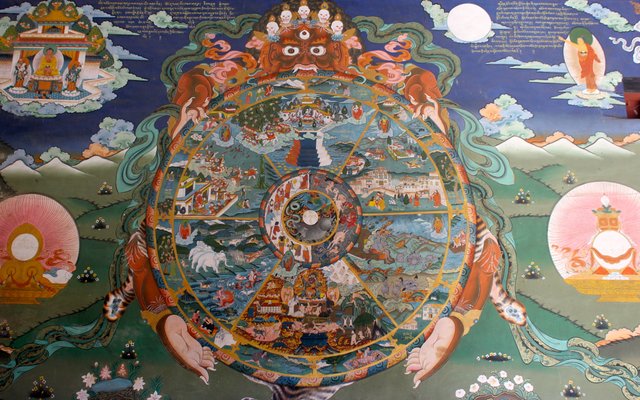
The preceding phrase—reberthing in remarriment out of dead seekness to devine previdence— represents the four stages of the Viconian Cycle (birth, marriage, death and divine providence), but may also allude to Saṃsāra, the Buddhist cycle of birth, suffering, death and rebirth. Joyce already drew upon this twelve-link chain in a well-known passage in the opening chapter of Finnegans Wake:
In the ignorance that implies impression that knits knowledge that finds the nameform that whets the wits that convey contacts that sweeten sensation that drives desire that adheres to attachment that dogs death that bitches birth that entails the ensuance of existentiality. (RFW 015.04-07)
- a lottuce land The lotus is an important symbol of enlightenment and rebirth in Buddhism:
“Endless evil, I know, comes of desire. The trees that grow in the forest of desire have their roots in suffering and strife, and their leaves are poisonous. Desire burns like fire and wounds like a sword. I am not one of those who seek the company of women; it is my lot to live in the silence of the woods. There, through meditation my mind will find peace, and I shall know happiness. But does not the lotus grow and flourish even amid the tangle of swamp-flowers ? Have there not been men with wives and sons who found wisdom? Those who, before me, have sought supreme knowledge spent many years in the company of women. And when the time came to leave them for the delights of meditation, theirs was but a greater joy. I shall follow their example.” (Hérold & Blum 38-39)

Lettuce leaves are green, so perhaps this lotus-land is Ireland.
These Buddhist elements were added to this paragraph at quite a late stage in the composition—May 1938, when Joyce was working on the second set of galleys (JJDA), which Rose & O’Hanlon refer to as draft level 10 for this chapter.
Analysis of the Church Catechism
Another important source for this paragraph is a religious tract that was published anonymously in 1879: Analysis of the Church Catechism. According to Danis Rose and John O’Hanlon, curators of the James Joyce Digital Archive, this tract was prepared expressly for the Oxford and Cambridge local examinations. The catechism in question is that of the Church of England—appropriate as HCE is a Protestant. The work clearly draws heavily on A Historical and Practical Exposition of the Catechism of the Church of England by the Reverend Thomas Halton, Curate of Liverpool and Chaplain to the Earl of Lonsdale (London 1843). Some of Joyce’s borrowings from the anonymous Analysis can be found in the first draft of this paragraph. (Note that in the online copy of the Analysis on the Internet Archive the pages are out of sequence: pages 17-32 come between pages 48 and 49.)
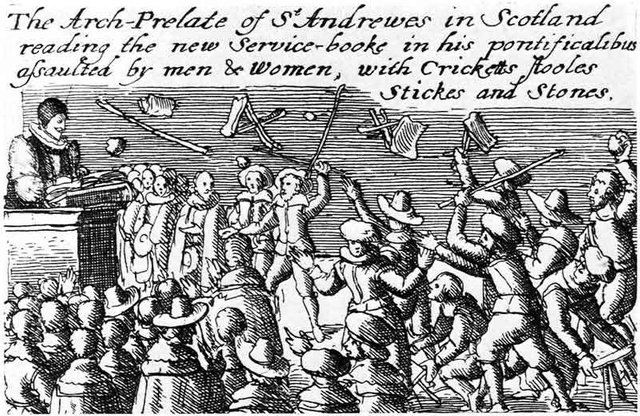
- covenanter The original Covenanters were members of a religious and political movement in 17th-cenutry Scotland who supported a Presbyterian Church of Scotland and the primacy of its leaders in religious affairs. They also objected to the Book of Common Prayer, which is quoted in this paragraph—for mine qvinne I thee giftake and bind my hosenband I thee haltar (FWEET). Their name is derived from covenant, a Biblical term for a bond or agreement between God and man:
The word covenant means a coming together, or an agreement between two persons. The Christian Covenant means the Christian agreement. God on the one side, man on the other. The Christian Covenant, or the Covenant of Grace, is the new covenant God made with man, by which He promised forgiveness of sins through a Saviour. (Anonymous 8)
- his citadear of refuge, whither ... the hejirite had fled ... to forget in expiating manslaughter
SIXTH COMMANDMENT.
“THOU SHALT DO NO MURDER.”—This command forbids the taking away another’s life wilfully. The Mosaic law punished the murderer with death; but the manslayer, he who by accident caused the death of another, was permitted to flee to one of the cities of refuge. This command also forbids anger, “hatred, and malice, and all uncharitableness.” St. John says: “Whosoever hateth his brother is a murderer.” The portion of the murderer is in “the lake which burneth with fire and brimstone.” (Anonymous 37)
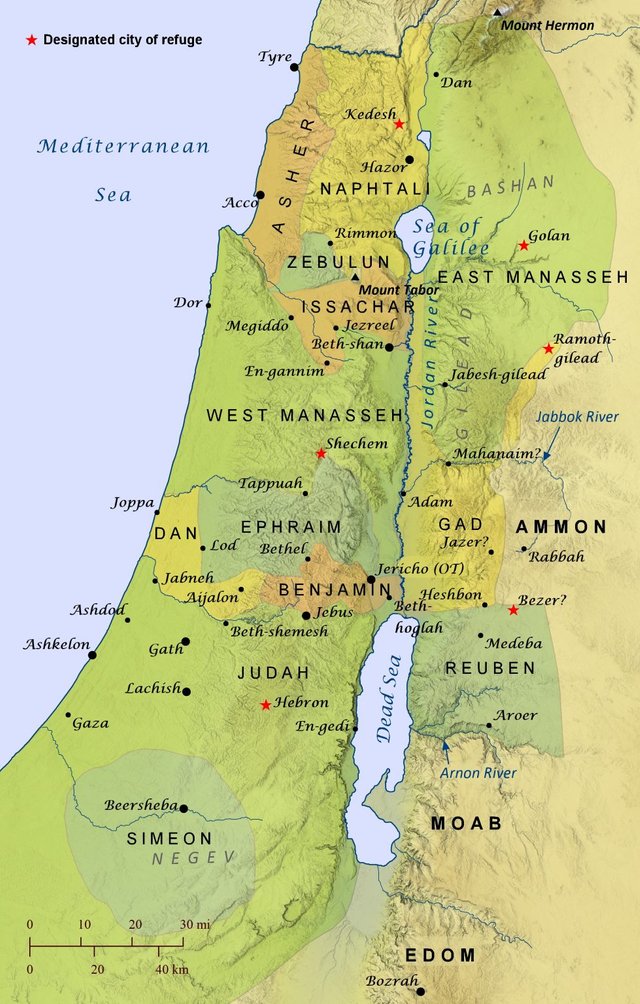
- in which by the fourth commandment with promise his days apostolic were to be long by the abundant mercy of Him Which Thundereth From On High In the Catholic Catechism the Fourth Commandment is the one that commands each of us to honour his father and mother. This is the Fifth Commandment in the Catechism of the Church of England:
FIFTH COMMANDMENT.
“HONOUR THY FATHER AND THY MOTHER, THAT THY DAYS MAY BE LONG IN THE LAND WHICH THE LORD THY GOD GIVETH THEE,”
This is called the commandment with promise. The blessings promised to those who observe it are, long life, God’s favour, temporal mercies. (Anonymous 36)
“COMMUNION.”—Fellowship, united in one family, bound together by mutual affections, companionship, and sympathy. Our blessed Lord prays for this union “that they may be one;” this holy bond was strikingly manifested in Apostolic days: they “were of one heart and of one soul.” (Anonymous 25)
Joyce has also quoted here from the possibly fraudulent charter of 964 CE—Oswald’s Law—in which Edgar the Peaceful, King of England, claims possession of Dublin:
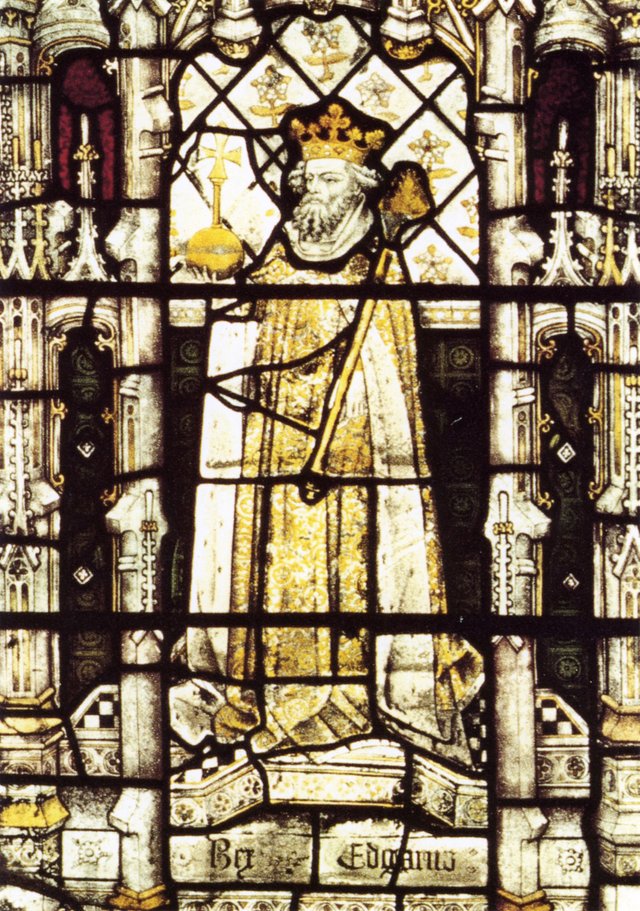
By the abundant mercy of God, who thundereth from on high, and is King of kings, and Lord of lords, I EDGAR, king of the English, and emperor and lord of all the kings of the islands of the ocean, which lie round Britain, and of all the nations included in it, give thanks to the omnipotent God, my King, who hath so greatly extended my empire, and exalted it above the empire of my ancestors, who though they obtained the monarchy of all England, from the reign of Aethelstan, who, first of all the kings of the English, by his arms, subdued all the nations inhabiting Britain, yet none of them ever attempted to stretch its bounds beyond Britain. But divine Providence hath granted to me, together with the empire of the English, all the kingdoms of the islands of the Ocean, with their fierce kings, as far as Norway, and the greatest part of Ireland, with its most noble city of Dublin; all which by the most propitious grace of God, I have subdued under my power. (Warburton et al 46)
What was Joyce’s source for this? Possibly from Volume I of the History of the City of Dublin by John Warburton, James Whitelaw & Robert Walsh, from which the above quotation was taken.
- all which in them were In VI.B.11.155l Joyce copied the phrase all that in them is from the Analysis:
FOURTH COMMANDMENT. “REMEMBER THAT THOU KEEP HOLY THE SABBATH DAY. SIX DAYS SHALT THOU LABOUR, AND DO ALL THAT THOU HAST TO DO; BUT THE SEVENTH DAY IS THE SABBATH OF THE LORD THY GOD. IN IT THOU SHALT DO NO MANNER OF WORK, THOU, AND THY SON, AND THY DAUGHTER, THY MANSERVANT, AND THY MAID-SERVANT, THY CATTLE, AND THE STRANGER THAT IS WITHIN THY GATES. FOR IN SIX DAYS THE LORD MADE HEAVEN AND EARTH, THE SEA AND ALL THAT IN THEM IS, AND RESTED THE SEVENTH DAY; WHEREFORE THE LORD BLESSED THE SEVENTH DAY, AND HALLOWED IT.” (Anonymous 35)
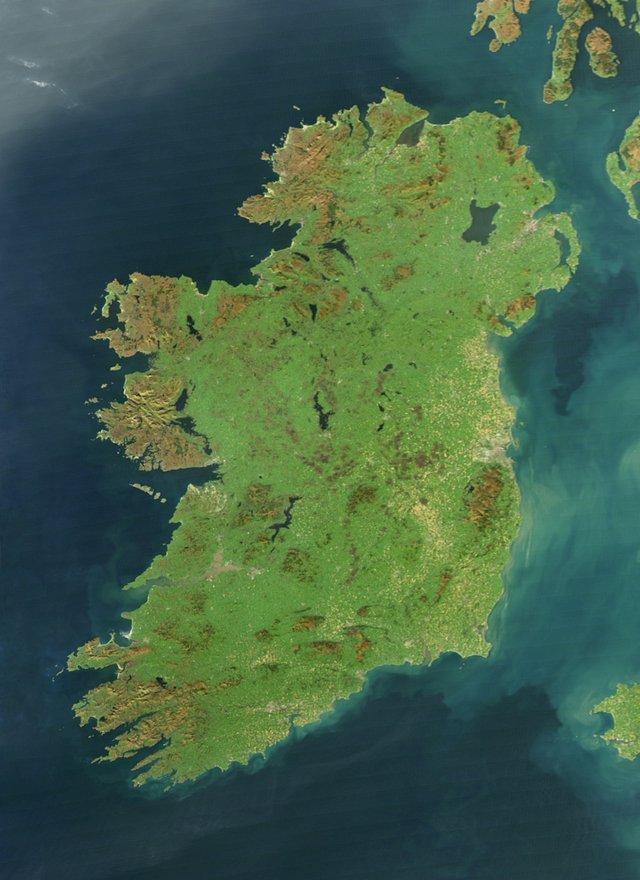
- do him hurt In VI.B.11.155j Joyce copied the phrase do you hurt from the Analysis:
THOU SHALT NOT MAKE UNTO THEE ANY GRAVEN IMAGE ... “A JEALOUS GOD.”—This injunction was enforced upon the Israelites after they had entered the Promised Land. “He is a jealous God; He will not forgive your transgressions nor your sins. If ye forsake the Lord, and serve strange gods, then He will turn and do you hurt, and consume you.” Yet they despised the command and sank into idolatry many times, until for this sin they were carried away in captivity. (Anonymous 34)
- ghostly following bodily In VI.B.11.157k Joyce copied the phrase dangers, ghostly & bodily from the Analysis:
SUMMARY OF THE LORD’S PRAYER “WHAT DESIREST THOU OF GOD IN THIS PRAYER?”
“I DESIRE MY LORD GOD OUR HEAVENLY FATHER, WHO IS THE GIVER OF ALL GOODNESS, TO SEND HIS GRACE UNTO ME, AND TO ALL PEOPLE; THAT WE MAY WORSHIP HIM, SERVE HIM, AND OBEY HIM AS WE OUGHT TO DO. AND I PRAY UNTO GOD, THAT HE WILL SEND US ALL THINGS THAT BE NEEDFUL BOTH FOR OUR SOULS AND BODIES; AND THAT HE WILL BE MERCIFUL UNTO US, AND FORGIVE US OUR SINS; AND THAT IT WILL PLEASE HIM TO SAVE AND DEFEND US IN ALL DANGERS, GHOSTLY AND BODILY; AND THAT HE WILL KEEP US FROM ALL SIN AND WICKEDNESS, AND FROM OUR GHOSTLY ENEMY, AND FROM EVERLASTING DEATH. AND THIS I TRUST HE WILL DO OF HIS MERCY AND GOODNESS, THROUGH OUR LORD JESUS CHRIST. AND THEREFORE I SAY, AMEN, SO BE IT.” (Anonymous 48-49)
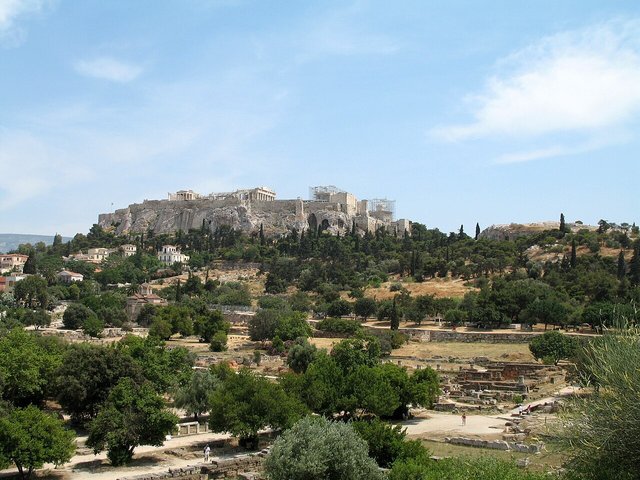
- as were he made a curse for them In VI.B.11.155h Joyce copied the phrase made a curse for us from the Analysis:
By reason of indwelling sin man is unable to render the obedience required by God’s law, “For all have sinned and come short of the glory of God.” The sentence pronounced by the law upon the transgressor is death; but Christ by His obedience to the law has wrought out a deliverance from the curse of the law: “Christ hath redeemed us from the curse of the law, being made a curse for us.” (Anonymous 33)
- the corruptible lay quick, all saints of incorruption
ELEVENTH ARTICLE. “THE RESURRECTION OF THE BODY.”
“RESURRECTION” means rising again, or coming to life again. The bodies of all that are in their graves shall rise again in the resurrection at the last day. The Lord Jesus Christ will raise them by His own mighty power; “the trumpet shall sound, and the dead shall be raised incorruptible, and we shall be changed. For this corruptible must put on incorruption, and this mortal must put on immortality.” (Anonymous 25-26)
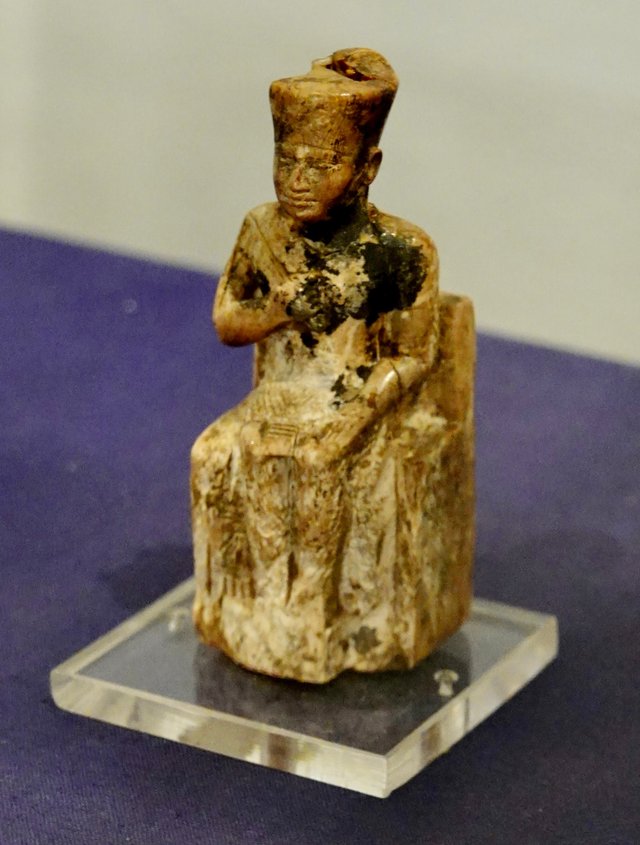
- an holy nation
“THE ELECT PEOPLE OF GOD.”—A chosen people. The people of Israel were a chosen people. All true believers are God’s chosen people; chosen for special work for His own glory. “A chosen generation—an holy nation.” (Anonymous 28)
- resurrection to condemn In VI.B.11.154p Joyce copied the phrase resurrection of / damnation from the Analysis:
THE RESURRECTION BODY will be a glorious body; “we shall also bear the image of the Heavenly.” “We shall be like Him.” The resurrection of the righteous is called by our Lord “the resurrection of life;” the resurrection of the wicked is called “the resurrection of damnation.” (Anonymous 26)
- might convince him ... of their proper sins In VI.B.11.154k Joyce copied the phrase convinces of sin from the Analysis:
The Greek word parakletos, Comforter, is elsewhere rendered Advocate; the Holy Ghost is, like Christ, an Advocate with the Father. He also convinces of sin; He is a teacher, guiding into all truth, and leading in the way of holiness; He restrains from sin, by His indwelling. (Anonymous 24)
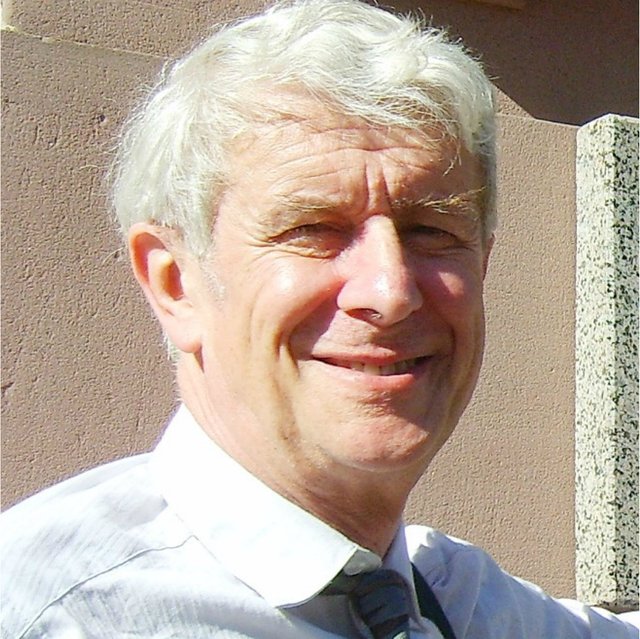
Finally, I might point out that the Joycean scholar Terence Killeen discusses this paragraph at some length in an article that was published in Issue 13 of Genetic Joyce Studies. Killeen’s paper is a critique of the editorial principles followed by Danis Rose & John O’Hanlon in The Restored Finnegans Wake (Killeen 8-12).
I leave the reader to pursue the remaining elements in this pregnant paragraph. Notable among these are:
Troy: seventh city ... citadear ... laimen [Layamon, whose Brut was mentioned in the preceding paragraph: RFW 048.36-37] ... Atreeatic [House of Atreus?] ... Emeraldillium.
The French Revolution: Marie-Antoinette’s words J’ai tout vu, tout entendu et tout oublié [I saw everything, heard everything and forgot everything] refer to the events of 5-6 October 1789, when the Women of Paris Marched on Versailles (Trogan 56). The Reign of Terror (terror) occurred in 1793-1794 and claimed at least 35,000 lives. French: franchissables, passable, surmountable, may also be relevant.
And that’s as good a place as any to beach the bark of our tale.
References
- Anonymous, Analysis of the Church Catechism, T J Allman, London (1879)
- Joseph Campbell, Henry Morton Robinson, A Skeleton Key to Finnegans Wake, Harcourt, Brace and Company, New York (1944)
- Luca Crispi & Sam Slote (editors), How Joyce Wrote Finnegans Wake: A Chapter-by-Chapter Genetic Guide, The University of Wisconsin Press, Madison, Wisconsin (2007)
- Thomas Halton, A Historical and Practical Exposition of the Catechism of the Church of England, James Burns, London (1843)
- David Hayman, A First-Draft Version of Finnegans Wake, University of Texas Press, Austin, Texas (1963)
- André-Ferdinand Hérold, La Vie du Bouddha, d’après les textes de l'Inde ancienne, H Piazza, Paris (1926)
- André-Ferdinand Hérold, Paul C Blum (translator), The Life of Buddha According to the Legends of Ancient India, A & C Boni, New York (1927)
- Eugene Jolas & Elliot Paul (editors), transition, Number 3, Shakespeare & Co, Paris (1927)
- James Joyce, Finnegans Wake, The Viking Press, New York (1958, 1966)
- James Joyce, James Joyce: The Complete Works, Pynch (editor), Online (2013)
- Terence Killeen, Tackling the “errears and erroriboose”: Another Look at the Rose/O’Hanlon Finnegans Wake, Genetic Joyce Studies, Issue 13, Centre for Manuscript Genetics, University of Antwerp, Antwerp (2013)
- Danis Rose, John O’Hanlon, The Restored Finnegans Wake, Penguin Classics, London (2012)
- Édouard Trogan, Les Mots Historiques du Pays de France, Eighth Edition, Maison Alfred Mame et Fils, Tours (1916)
- John Warburton, James Whitelaw, Robert Walsh, History of the City of Dublin, Volume 1, T Cadell & W Davies, London (1818)
Image Credits
- Uruvilva (Bodh Gaya): Great Buddha Statue, Bodh Gaya (Uruvilva), © Andrew Moore (photographer), Creative Commons License
- Bill Cadbury: © Michael McDermott (photographer), Fair Use
- The Mahabodhi Tree at Uruvilva: © Ken Wieland (photographer), Creative Commons License
- Mahabodhi Temple & Gardens in Uruvilva (Bodh Gaya): © Diego Tirira (photographer), Creative Commons License
- The Buddha’s Silent Departure: Anonymous Sculpture (2nd Century CE), Indian Museum, Kolkata, Biswarup Ganguly (photographer), Public Domain
- The Demon Mara and the Earth Goddess Phra Mae Thorani: Tom Cockrem (photographer), Public Domain
- Rahula: Anonymous Tibetan Artist (16th century), Rubin Museum of Art, New York, Public Domain
- The Buddha Resists the Army of Mara: Anonymous Artist (10th century), Mogao Caves, Dunhuang, China, Public Domain
- A Buddhist Bhavacakra (Symbolic Representation of Saṃsāra): Anonymous Artist, Trongsa Dzong, Bhutan, Nagarjun Kandukuru (photographer), Public Domain
- The Lotus (Nelumbo nucifera): Shin-改 (photographer), Public Domain
- The Covenanters Riot over The Book of Common Prayer: Wenceslaus Hollar (engraver), Fitzroy Maclean, Scotland: A Concise History, Revised Edition, Page 114, Thames & Hudson, London (1993)
- Cities of Refuge: © David P Barrett (cartographer), Creative Commons License
- Edgar the Peaceful: Anonymous Artists (15th century), Clayton & Bell (stained-glass artists for Edgar’s head), All Souls College, Oxford, Public Domain
- The Emerald Isle: Jeff Schmaltz, MODIS Rapid Response Team, Goddard Space Flight Center, NASA Earth Observatory, Public Domain
- The Agora and Acropolis in Athens: © bobbsled (photographer), Creative Commons License
- Pharaoh Cheops: Anonymous Statuette of Pharaoh Cheops (Khufu), Fourth Dynasty, Cairo Museum, Olaf Tausch (photographer), Public Domain
- Terence Killeen: Anonymous Photograph, Fair Use
Useful Resources
- Buddhism in Finnegans Wake
- Jorn Barger: Robotwisdom
- Joyce Tools
- FWEET
- The James Joyce Scholars’ Collection
- FinnegansWiki
- James Joyce Digital Archive
- John Gordon’s Finnegans Wake Blog
- James Joyce: Online Notes
